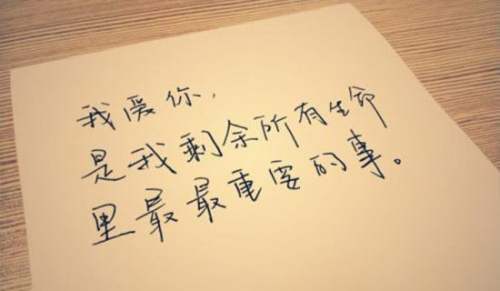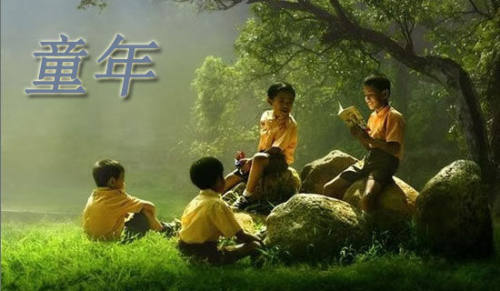麦积山导游词【最新4篇】
麦积山导游词 篇一
麦积山,位于中国甘肃省天水市秦州区,是中国著名的风景名胜区之一。它以其壮丽的自然风光和丰富的历史文化而闻名于世。现在,我将带领大家一起探索这座美丽的山脉。
首先,我们来到了麦积山的主峰,海拔2596米的峰顶。站在这里,您可以俯瞰整个麦积山的壮丽景色。山峰陡峭,峰岭连绵,给人一种壮丽而宏伟的感觉。这里的空气清新,环境优美,是休闲度假的绝佳去处。
接下来,我们来到了麦积山的著名景点——麦积山石窟。麦积山石窟是中国四大石窟之一,也是中国石窟艺术的杰作之一。它始建于南北朝时期,历经多次修复和扩建,至今已有1500多年的历史。石窟内有大量的佛像、壁画和石刻,展示了中国古代艺术的独特魅力。其中最著名的是“麦积山女儿墓”,被誉为“东方的梵蒂冈”。
除了麦积山石窟,这里还有其他一些值得一看的景点。比如,麦积山瀑布是中国最大的瀑布之一,水势雄伟壮观,给人一种宏大而震撼的感觉。另外,麦积山还有许多古老的寺庙和庙宇,如麦积山寺和天水清凉寺,这些寺庙保存了大量的历史文物,是了解中国佛教文化的重要场所。
除了自然风光和历史文化,麦积山还以其丰富的民俗文化而闻名。每年的麦积山庙会吸引了大批游客前来观光和体验当地的传统民俗活动,如舞龙舞狮、唱戏、民乐演奏等等,让人们感受到浓厚的节日氛围和独特的民俗风情。
最后,我想提醒大家,来麦积山旅游时,一定要注意保护环境,不乱扔垃圾,不破坏公共设施,共同维护这片美丽的山脉。希望您在麦积山的旅行中度过一个愉快而难忘的时光!

麦积山导游词 篇二
麦积山,位于中国甘肃省天水市秦州区,是中国著名的风景名胜区之一。它以其壮丽的自然风光和丰富的历史文化而闻名于世。现在,我将带领大家一起探索这座美丽的山脉。
首先,让我们来到麦积山的主峰,站在这里,您可以欣赏到壮丽的日出和日落景色。麦积山的日出和日落都非常美丽,云彩的变化和阳光的洒落,构成了一幅幅美轮美奂的画面。在这里,您可以感受到大自然的奇妙和宇宙的无限。
接下来,我们来到了麦积山的著名景点——麦积山石窟。这里是中国四大石窟之一,也是中国石窟艺术的杰作之一。石窟内有大量的佛像、壁画和石刻,展示了中国古代艺术的独特魅力。在这里,您可以领略到中国古代艺术的辉煌和智慧。
除了麦积山石窟,这里还有其他一些值得一看的景点。比如,麦积山瀑布是中国最大的瀑布之一,水势雄伟壮观,给人一种宏大而震撼的感觉。另外,麦积山还有许多古老的寺庙和庙宇,如麦积山寺和天水清凉寺,这些寺庙保存了大量的历史文物,是了解中国佛教文化的重要场所。
除了自然风光和历史文化,麦积山还以其丰富的民俗文化而闻名。每年的麦积山庙会吸引了大批游客前来观光和体验当地的传统民俗活动,如舞龙舞狮、唱戏、民乐演奏等等,让人们感受到浓厚的节日氛围和独特的民俗风情。
最后,我想提醒大家,来麦积山旅游时,一定要注意保护环境,不乱扔垃圾,不破坏公共设施,共同维护这片美丽的山脉。希望您在麦积山的旅行中度过一个愉快而难忘的时光!
麦积山导游词 篇三
The climate of Tianshui is suitable for the survival of mankind. That makes it become a cradle of the Chinese nation. As we know, Fuxi and Nuwa who are the Chinese ancestors lived here. They created the early period of Chinese culture. For the suitable climate, there are many wonderful attractions. This time we will go to Maiji Mountain, and visit Maiji Mountain Grottoes.
Maiji Mountain is located 50 km far from Tianshui just to the south of Maiji Village. It is only 142 meters above the ground, but the altitude of about 2,000 meters above the sea level. It is a single and distinct peak of the xiaolong Mountain of Western Qinling Range. Since it looks like a huge wheat straw pile from afar, it is called Maiji Mountain (the Wheat Straw Pile M
ountain). The flouring various plants with clouds wrapping them in a blanket of mist create one of nature’s most majestic sights. In the late of the Western Hang Dynasty, it became the palace of Kui Xiao (隗嚣) who is a famous general of Tianshui. The Maiji Mountain Scenic Area was listed as a famous resort under the state protection by the State Council in 1982. And Maiji Mountain Grottoes are the most important area of it, which rank the second in the four well-known grottoes in Gansu Province. (The four well-known grottoes are Mogao Grottoes, Maiji Mountain Grottoes, Bingling Temple Grottoes and Mati Temple Grottoes.)
The grottoes of Maiji Mountain are caved in the cliffs, which are in rows 20 to 30 meters or 70 to 80 meters above the foot of mountain. That makes them look like a huge honeycomb in the distance. The wide of those grottoes which are linked by some dangerous ways is from 3 meters to about 1 meter.
Maiji Mountain Grottoes were first dug in the Qin Dynasty of the Sixteen States Period (about 384 to 417 AD). And the grottoes were cut and repaired in the successive dynasties of the Northern Wei Dynasty, the Western Wei Dynasty, the Northern Zhou Dynasty, the Sui Dynasty, the Tang Dynasty, the Five Dynasties, the Song Dynasty, the Yuan Dynasty, the Ming Dynasty and the Qing Dynasty. An earthquake which occurred in Tianshui during the Tang Dynasty (734 AD) resulted in collapse of the cliff, and the grottoes were subsequently pided into tow sections: the Eastern and the Western with 54 and 140 grottoes respectively, which were called the Eastern Pavilion and the Western Pavilion during the Five Dynasties.
In the Eastern, there is the Thousands of Buddhism Corridor, the Throwing Flowers Building, the Upper Seven-Buddhism Pavilion, and the Middle Seven-Buddhism Pavilion, and so on. In the Western, there are 3 grottoes which are the most famous. In them, the biggest is the Thousands of Buddhism Pavilion, the second is the Heavenly Cave, and the smallest is the Cave NO.127, which were all cut in 6 AD.
There is a legend associated with the Throwing Flowers Building. It is said that Sakyamuni appeared here to preach. During the first time, there were tens of thousands of disciples in the valley which was under the
Throwing Flowers Building. In order to know whether all of them understand the Buddhist thoughts and tenets, the 28 flying aspara threw different kinds of petals to them. If the disciples understood, the petals would not fall, but fall; if not, the petals would fall. It was surprised that all of the petals rose. Now you can throw some pieces of paper, you will find the pieces rise. Do you know why? Because there is an air current which can make some light things rise.
Though Maiji Mountain Grottoes are suffered many earthquakes and fires, now there are 194 grottoes, more than 7,200 statues and over 1,300 square meters murals. As the stone of Maiji Mountain is unfit for caving, most statues are clay sculptures, but they are quite exquisite. The sculptures are mainly images of Buddha and his disciples, Bodhisattvas, the Heavenly Kings and Vajras. It is surprised that the sculptures have been preserved well, even though the climate is wet in Maiji Mountain.
Like the earliest sculpture of Mogao Grottoes, the grottoes of Maiji Mountain were obviously influenced by the Indian style in 30 caves during the Northern Wei Dynasty, the Western Wei Dynasty and the Northern Zhou Dynasty. By the time of the Song Dynasty, the style was changed greatly due to mixing the Indian culture and the Central Chinese culture. The sculptures wear perse countenance looking vivid. And the dress of them is soft and natural. In the late period, the style was continuously improved on the basis of the Chinese current culture. So the sculptures are more vivid than before and full of the interest of worldly life. However, since the Northern Wei Dynasty, almost the sculptures bowed their heads, as if they were looking this world. They are the gods, but they look like the human beings.
The grottoes of Maiji Mountain are of high values for the study on politic, economy and culture in ancient China, even though they are the Buddhist arts. The grottoes embody the Chinese national tradition and consciousness, and also have the characteristic of making the form show the spirit. Especially the sculptures of the Sui and Tang Dynasty are full and rounded, and in the Song Dynasty, they are thin, delicate and pretty. Maiji Mountain Grottoes reflect the evolution of the clay sculptures art in China. They are referred to as “the treasure houses of oriental sculptures”.
麦积山导游词 篇四
Located 45 kilometers (about 28 miles) southeast of Tianshui City in Gansu Province, Maiji Mountain rises up abruptly 142 meters (about 155 yards) from the landscape. The people named the mountain Maiji because it resembles a stack of wheat straw (mai meaning wheat, and ji meaning stack). On the sheer cliff that marks the southwest side of Maiji Mountain, people have labored for centuries carving niches and caves, giving rise to what is known today as the Maiji Caves. Inside the caves are clay statues, whose heights vary from 20 centimeters (about 8 inches) to 15 meters (over 49 feet). Besides 194 Buddhist caves and niches, containing more than 7, 200 clay statues, there are also murals of over 1, 300 square meters (about 1, 555 square yards) in the Maiji Caves as well. These statues are works of art that reflect ancient craftsmanship and dedication to the Buddhist ideal. Rarely can one find caves and statues carved over sheer cliffs in China, and this is one of the most distinguishing features of Maiji Caves. Being carved on the cliff, these caves are connected by plank roads that hang precariously along the face of the cliff. Visitors can only reach each cave by using these plank roads, which offers a breathtaking experience.
Work on the Maiji caves began in the late Qin Dynasty (221 BC - 206 BC), progressing through to the Qing Dynasty (1644 - 1911). The Northern Wei(386 - 534) period was also a time of its great prosperity, and Buddhism began to prevail as a cultural force. Subsequent dynasties added to and sometimes rebuilt the caves according to the styles of the era. Interestingly, although the statues were built at the same location, none of them maintained a similar style with those preceding it. Statues from each dynasty clearly developed distinct elements.
Another curious feature of the statues is their trend toward secularization, that is, a move toward depicting the icons as man rather than god. Except for statues built in the early period, almost all Buddhist statues look affable and accessible. They were no longer gods standing high in the heaven, but rather became more like common people.
Because of its exquisite clay statues and superb sculptural skills, Maiji Caves acquired special recognition. They have been classified as an Oriental Statues Exhibition Hall. Maiji Caves are one of the four most important caves in China. The other threes are Mogao Caves in Dunhuang, Gansu Province, Yungang Caves in Datong, Shanxi Province, and Longmen Grottoes in Luoyang, Henan Province. Their emphasis is on exquisite statues and beautiful natural scenes, while the others are on florid murals or magnificent stonecutting.
There are other places of interest near Maiji Mountain as well, Xianren Cliff,Shimen Mountain, Quxi and Maiji Arboretum, all offer fine panoramic views of mountains, rivers and plants in Northwest China.






